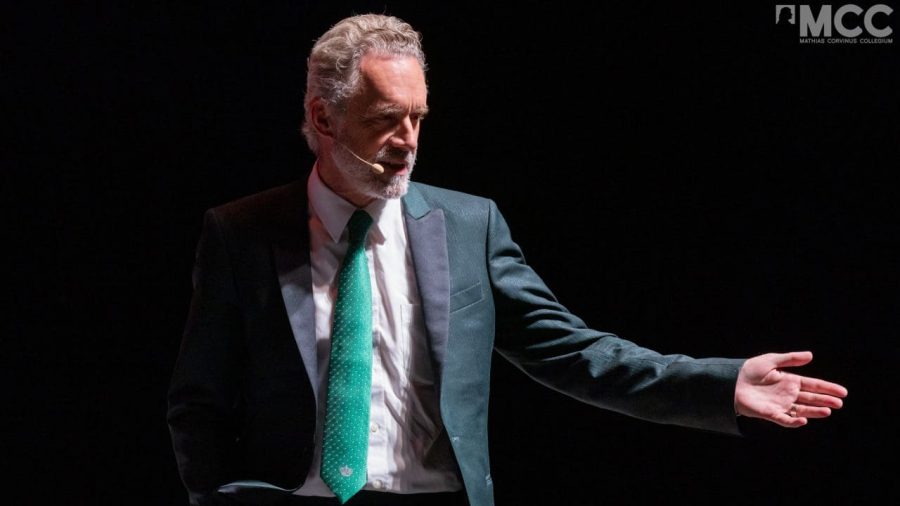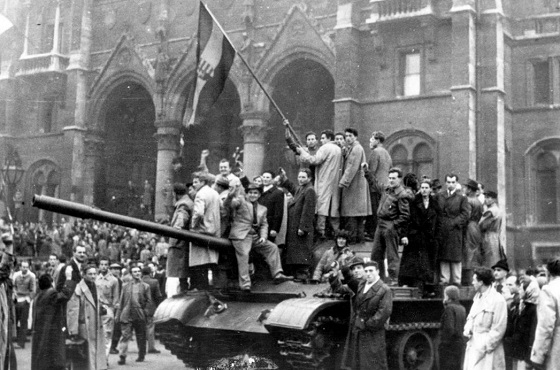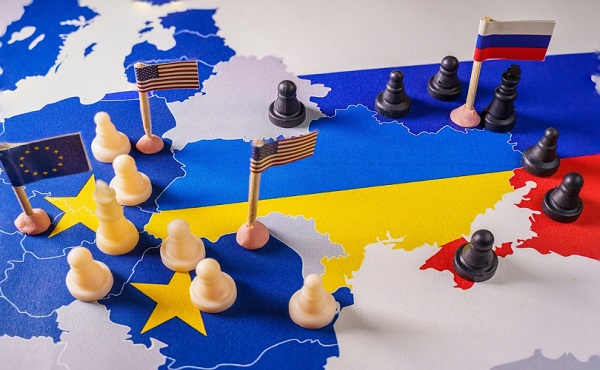Frontier Centre for Public Policy
How Canadians lost the rule of law

From the Frontier Centre for Public Policy
Universal problems are evident in the rejection of Jordan Peterson’s appeal against Ontario’s College of Psychologists (CPO) in Divisional Court. They had sought to re-educate him as a condition for retaining his license—because he openly ridiculed public figures. But as Dr. Peterson related in the National Post, October 11, they’ve failed to find a brainwasher for him.
Precedent now confirms that unaccountable tribunals may override apparent Charter rights. That may declare as unacceptable anyone’s contrary opinion or peaceful protest. Dr. Peterson’s case follows the way the courts clobbered supporters of the 2022 Freedom Convoy protest on Parliament Hill. Now members of all regulated professions are especially at risk, including doctors, lawyers and teachers. Instead of protecting citizens from overreach, the courts have become the instrument for enforcing tyranny.
As the Toronto Star reported on the first press conference by Chief Justice Richard Wagner in 2018, he said his court was “the most progressive in the world.” Today, progressive is synonymous with the absurdities that Dr. Peterson ridiculed. Wanjiru Njoya, a legal scholar at the University of Exeter has been quoted as saying that the courts automatically define as unreasonable any perspectives falling outside progressive boundaries.
A further foundational problem is that judges now routinely preside over cases where they have an obvious bias or personal connection, and then defer to those interests. Canadian judges should follow this admonition in the American Judicial Code? “Any justice, judge, or magistrate judge … shall disqualify himself in any proceeding in which his impartiality might reasonably be questioned.”
Justice Paul Schabas wrote the Decision for Dr. Peterson’s appeal before Divisional Court. However, he had previously been involved, personally, on the side of the argument opposite that of Dr. Peterson. In June 2018, as head of the Law Society of Ontario (LSO), he oversaw the imposition on lawyers of their controversial Statement of Principles (SOP). As a condition of licensing, it required a commitment to Equity, Social and (Corporate) Governance (ESG). Later, the LSO withdrew it following protests like African-Canadian Elias Munshya’s in Canadian Lawyer: “Lawyers play an essential role in our society; that role, however, does not include becoming state agents that parrot state-sponsored speech.”
Chief Justice Wagner recently confirmed that courts may now freely override common law precedent. He said that: “Apart from considering [historic] decisions as part of our legal cultural heritage, no one today will refer to a decision from 1892 to support his claim.” He added that “sometimes a decision from five years ago is an old decision ….”
Accordingly, the Supreme Court had simply disregarded century-old precedents when declaring Marc Nadon ineligible to join their club. My book Justice on Trial explains that many earlier appointments did not meet their newfound qualifications.
The subjective word “reasonable” supports much of Canada’s problematic jurisprudence. Absent objective criteria, judges reward friends and crush others as they may.
Justice Schabas said several comments similar to this one were unacceptable: “Dr. Peterson posted a tweet in May 2022, in which he commented on a Sports Illustrated Swimsuit Edition cover with a plus-sized model, saying: ‘Sorry. Not Beautiful. And no amount of authoritarian tolerance is going to change that.’”
Dr. Peterson objected that the CPO’s Code of Ethics should not constrain such “off duty opinions.” The Code says “[p]ersonal behaviour becomes a concern of the discipline only if it is of such a nature that it undermines public trust in the discipline as a whole or if it raises questions about the psychologist’s ability to carry out appropriately his/her responsibilities as a psychologist.” So which magazines’ cover pictures are not of public interest?
Justice Schabas continued, “The [CPO’s investigating] Panel also noted Dr. Peterson’s reliance on the Supreme Court’s decision in Grant v. Torstar, 2009 SCC 61, [2009] 3 SCR 640, a defamation case which held at para. 42, that “freedom of expression and respect for vigorous debate on matters of public interest have long been seen as fundamental to Canadian democracy … all Canadian laws must conform to it.” Why did Justice Schabas override this settled law?
Europe’s Charter of Fundamental Rights says, “Everyone has the right to freedom of expression. This right shall include freedom to hold opinions and to receive and impart information and ideas without interference by public authority and regardless of frontiers.” So how can a right be fundamental in other free and democratic countries but not in Canada?
And why did the court of Chief Justice Wagner decline to hear Dr. Peterson’s appeal and allow Justice Schabas’ decision to stand? No prize for your answer!
As long advocated by The Globe & Mail and The Toronto Star, Dr. Peterson’s case shows the need to end self-regulation and in-house discipline for lawyers and judges. That happened for lawyers for England and Wales in 2007. So why not in Canada?
Ottawa resident Colin Alexander’s latest books are Justice on Trial: Jordan Peterson’s case shows the need to fix a broken system; and Ballad of Sunny Ways: Popular traditional verse about living, loving and money.
Censorship Industrial Complex
Another Mass Grave?

No. One outrageous lie was quickly discounted, yet another lives on, to the detriment of everybody involved.
From the Frontier Centre for Public Policy
The Kamloops claim didn’t come out of the blue. The TRC’s well-publicized “missing children” wild goose chase thoroughly indoctrinated indigenous communities. It convinced foolish people, like Casimir, Leah Gazan and Kimberley Murray, that thousands of “missing children” had been secretly buried all across Canada.
“My brother Rufus saw them take all those children and stand them up next to a big ditch, and then the soldiers shot them all and they all fell into that ditch. Some of the kids were still alive and they just poured the dirt in on top of them. Buried them alive.”
This mass murder happened in 1943 — not in Nazi-held Europe, but in Brantford, Ontario.
So, there you have it — the personal story of a residential school “survivor” describing the day the Canadian Army lined up 43 Indian children in front of a residential school at Brantford, Ontario, shot them and dumped their bodies into a mass grave. The May 27, 2021 announcement that the remains of 215 former students of the Kamloops residential school wasn’t the first time that a claim about sinister residential school deaths and clandestine burials had been made.
This Brantford story is obviously untrue. Any reasonably well-informed person with a lick of sense would know that at a glance.
But that didn’t stop the claim from making the social media rounds for years. According to the fact-check tens of thousands of people have read this bogus claim over the years, and many appear to have believed it completely. In fact, despite the fact checks proving that the claim was entirely false it continues to circulate today.
Both the Kamloops and Brantford claims came basically from the same place — the strange mind of a defrocked United Church Minister, Kevin Annett. It was Annett who created the bogus Brantford claim. In a strange twist, the picture at the top of the page — said to be from Brantford — is actually a photo of the former Kamloops Indian Residential School, as it looked in the 1920s.
And it was Annett who inspired the TRC’s misguided “missing children/unmarked graves” wild goose chase that, in turn, inspired Chief Rosanne Casimir to make the Kamloops claim. Both claims were equally and obviously false: The Kamloops claim was that the “remains of 215 children were found.” In fact, only radar blips (anomalies) were detected- blips that turned out. to most likely be from previous excavations, and not graves. Casimir and Annett both knew that they were making false claims.
Annett’s bogus claims come from his imaginative reworking of stories of “survivors” that he publicized in his blogs, books, interviews and movies.
His most famous movie is Unrepentant. This movie has been viewed by tens of thousands of Canadians, particularly in indigenous communities, such as the Tk’emlups community at Kamloops.
It has won awards, and been praised by eminent people, such as Noam Chomsky. Despite being every bit as false as the claim that the Canadian army shot 43 indigenous children, it actually convinced Member of Parliament, Gary Merasty, that it was accurate history. It is nothing short of amazing that this highly suggestible MP was then able to convince the equally gullible, and newly appointed TRC commissioners that there were many thousands of such “missing children”, as Annett alleged.
The TRC commissioners then launched their “missing children/unmarked graves” campaign despite having no mandate from the federal government to do so. (Independent researcher, Nina Green, describes this in detail here.)
You see, the Kamloops claim didn’t come out of the blue. The TRC’s well-publicized “missing children” wild goose chase thoroughly indoctrinated indigenous communities. It convinced foolish people, like Casimir, Leah Gazan and Kimberley Murray, that thousands of “missing children” had been secretly buried all across Canada.
Indigenous people became hooked on these stories.
Annett’s most famous book is his 393 page opus, “Hidden No Longer.” That book introduced the idea that the deaths of these thousands of “missing children” (his estimates range from 50,000 to 250,000, depending on the telling) constituted genocide. It is absolutely shocking that our MPs actually voted to condemn Canada of genocide based essentially on Kevin Annett’s bogus claims.
Based on those same bogus claims Annett was hired by the Brantford Mohawk community in 2011 to dig up the graves that he claimed existed in the apple orchard area of their residential school. According to Annett, these were the graves of indigenous students who had been secretly killed and buried in the apple orchard at the school, with the forced help of fellow students.
Sound familiar? It should. That was essentially the same grisly tale repeated by Chief Rosanne Casimir years later in Kamloops. (See above.)
Except that the wiser folks within the Brantford Mohawk community twigged on to Annett’s tricks. And when Annett was found on the streets of Toronto, waving around chicken bones, and pretending that they were the bones of children he had unearthed at Brantford, the Mohawk elders came together and publicly denounced Annett as a fraud at a community meeting. They then banished him from their community.
Unfortunately, Casimir became a useful idiot for Annett — just as the gullible TRC commissioners did — and no such leadership has yet come forward from the wiser elements within the Kamloops indigenous community. Those folks are silent, while the more vocal contingent are still sticking to their story that the soil anomalies are the “remains of 215 children,” and not what they almost certainly are — 1924 septic excavations.
So, the questions should be asked: Is the claim that the Canadian army shot 43 indigenous children, and dumped them in a mass grave, any more or less believable than the claim that priests killed and secretly buried 215 children at Kamloops, (or any of the copycat claims that followed it?)
What is it about that Mohawk claim that gives it appeal to only the most gullible among us, while the equally improbable Kamloops claim is still taken seriously by so many people?
On the surface, both claims are outrageous, and have no real evidence to support them. Quite the contrary, every Canadian history book ever written is cogent evidence that both stories are false. But the Mohawk claim was dismissed as the nonsense it obviously was, while the Kamloops claim lives on.
At least part of the answer to those questions appears to be in the response of the government in power, and the media to the claims. If the Brantford claim had been met by a prime minister who immediately ordered that flags be lowered, and offered hundreds of millions of dollars to any other indigenous communities who wanted to make similar claim, no doubt that Brantford claim would have been taken seriously.
Or, if the Brantford claim had been made in a time when a highly ideological CBC would ask no questions, and blindly promote the claim, the results might have been entirely different. As it is, the Brantford claim died a merciful death, while the equally specious Kamloops genocide claim still languishes like a stinking albatross around the neck of every Canadian.
Although the international community is increasingly broadcasting the obvious fact that the Kamloops claim is bogus Canada’s media remains asleep. That is not likely to change until leadership changes in Ottawa, and at the CBC. Pierre Pollievre, when questioned on this topic, stated clearly that he stands for historical truth, accuracy, and a full investigation into all questions pertaining to claims about residential school deaths. Hopefully, that means that excavation and a full inquiry will follow.
But Tk’emlups indigenous elders better wake up, like the Mohawk elders did. You are not doing your communities a favour by letting politicians and journalists treat you like children, by pretending to believe your bizarre claims. These false claims are already doing great damage.
Fortunately, there are many thoughtful indigenous people who do not blindly accept the claims about murderous priests and secret burials.
Here is one such wise indigenous person. He is a priest, and he is willing to do what our federal government and our CBC failed to do from the beginning namely to intelligently discuss the issue.
Thoughtful people like this need to be involved in a full investigation that will clear the air about the Kamloops claim, and get Canada back on track.
Brian Giesbrecht, retired judge, is a Senior Fellow at the Frontier Centre for Public Policy.
Frontier Centre for Public Policy
Hungarian Revolution of 1956: A Valiant Effort to Overthrow Communist Rule

Civilians wave Hungary’s national flag from a captured Soviet tank in Budapest’s main square during the anti-communist uprising of October 1956. AP Photo
From the Frontier Centre for Public Policy
By Gerry Bowler
For a time, Moscow seemed willing to accept change in Hungary, but when Nagy announced that his country would leave the Warsaw Pact and become neutral in the Cold War, that was a bridge too far for Khrushchev.
After World War II ended in the summer of 1945, the Soviet Red Army found itself to be in possession of Eastern Europe. In the next few years, the USSR extinguished the young democracies in Poland, Czechoslovakia, Romania, Latvia, Lithuania, and Estonia, while imposing Stalinist governments on autocracies such as Bulgaria and Hungary. With Marxist regimes taking over in eastern Germany, and Albania and Yugoslavia as well, Winston Churchill spoke truly when he said that “from Stettin the Baltic to Trieste in the Adriatic, an iron curtain has descended across the continent.”
In many of these countries, there was considerable resentment over the Russian occupation. In the Baltic republics, Romania, Croatia, Belarus, Poland, and Ukraine, doomed anti-Soviet guerilla movements with names like the “Forest Brothers,” the “Cursed Soldiers,” or “Crusaders,” fought underground wars that\ lasted for years. In June 1953 in East Berlin, workers rose up in protests against their communist masters, sparking a short-lived rebellion that spread to hundreds of towns before being crushed by Russian tanks. The most serious of these insurrections was the Hungarian Revolution of 1956. By 1956, there were stirrings of discontent in the Hungarian People’s Republic. Under the state control of industry, forced agricultural collectivization, and the shipping of produce to the Soviet Union, the economy was in bad shape. The supply of consumer goods was low and standards of living were dropping. Secret police surveillance of the population was harsh, while many Hungarians resented the suppression of religion and the mandatory instruction of the Russian language in schools. As news leaked out about Soviet Premier Nikita Khrushchev’s denunciation of Stalin in the so-called “Secret Speech,” hopes grew that reform of the communist system was possible.
Marxist intellectuals began to form study circles to discuss a new path for Hungarian socialism, but their cautious proposals were suddenly overtaken by demands for change by young people. On Oct. 22, 1956, students at the Technical University of Budapest drew up a list of demands for change known as the “Sixteen Points.” They included free elections, a withdrawal of Soviet troops, free speech, and an improvement in economic conditions.
On the afternoon of the next day, these points were read out to a crowd of 20,000 who had gathered at the statue of a leader of the Hungarian rebellion of 1848. By 6 p.m., when the students marched on the Parliament Building, the crowd had grown to around 200,000 people. This alarmed the government, and later that evening Communist Party leader Erno Gero took to the radio to condemn the Sixteen Points. In reaction, mobs tore down an enormous statue of Stalin.

People surround the decapitated head of a huge statue of Josef Stalin in Budapest during the Hungarian Revolution in 1956. Daniel Sego (second L), who cut off the head, is spitting on the statue. Hulton Archive/Getty Images
On the night of Oct. 23, crowds gathered outside the state broadcaster, Radio Budapest, to demand that the Sixteen Points be sent out over the air. The secret police fired on the protesters, killing a number of them. This enraged the demonstrators who set fire to police cars and seized arms from military depots. Army units ordered to support the secret police rebelled and joined the protest. The government floundered; on the one hand, they called Soviet tanks into Budapest; on the other hand, they appointed Imre Nagy, seen as a popular reformer, as prime minister.
As barricades were being erected by protesters and shots were being exchanged with secret police units, Nagy was negotiating with the Soviets who agreed that they would withdraw their tanks from the capital. Over the next few days, the rebellion spread; factories were seized, Communist Party newspapers and headquarters were attacked, and known communists and secret police agents were murdered. The new prime minister released political prisoners and promised the establishment of democracy, with freedom of speech and religion.
For a time, Moscow seemed willing to accept change in Hungary, but when Nagy announced that his country would leave the Warsaw Pact and become neutral in the Cold War, that was a bridge too far for Khrushchev. Fearing the collapse of the entire Soviet bloc, he made plans for an invasion of Hungary. By Nov. 3, the Red Army had surrounded Budapest, and the next day heavy fighting erupted as armoured columns entered the city. Some units of the Hungarian army fought back, joined by thousands of civilians, but the end was predictable. After a week of battles, with over 20,000 dead and wounded, resistance crumbled. A new Soviet-approved government under János Kádár purged the army and Communist Party, arrested thousands, and executed rebel leaders including Nagy.
Hundreds of thousands of refugees fled, many of them settling in Canada and the United States. World condemnation of the USSR was strong; critics of the Soviets included many communists in the West who resigned their party membership. Not until the collapse of the Soviet hold on Eastern Europe in 1989 did Hungarians get another taste of freedom.
Published in the Epoch Times.
Gerry Bowler, historian, is a Senior Fellow at the Frontier Centre for Public Policy.
-

 ESG2 days ago
ESG2 days agoCan’t afford Rent? Groceries for your kids? Trudeau says suck it up and pay the tax!
-

 John Stossel2 days ago
John Stossel2 days agoGreen Energy Needs Minerals, Yet America Blocks New Mines
-

 Daily Caller2 days ago
Daily Caller2 days agoLos Angeles Passes ‘Sanctuary City’ Ordinance In Wake Of Trump’s Deportation Plan
-

 Alberta2 days ago
Alberta2 days agoProvince considering new Red Deer River reservoir east of Red Deer
-

 Addictions2 days ago
Addictions2 days agoBC Addictions Expert Questions Ties Between Safer Supply Advocates and For-Profit Companies
-

 Aristotle Foundation1 day ago
Aristotle Foundation1 day agoToronto cancels history, again: The irony and injustice of renaming Yonge-Dundas Square to Sankofa Square
-

 conflict2 days ago
conflict2 days agoPutin Launches Mass-Production of Nuclear Shelters for his People
-

 conflict1 day ago
conflict1 day agoUS and UK authorize missile strikes into Russia, but are we really in danger of World War III?






